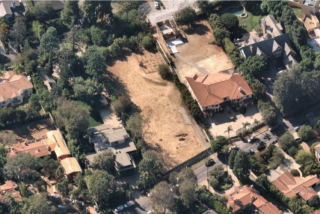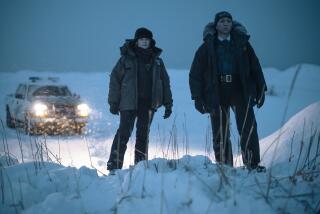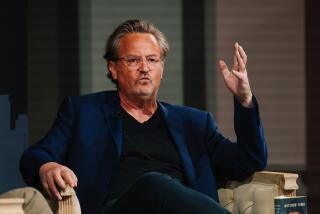Engineer-Sleuth Loves Challenge of Unraveling Deep Mysteries : . . . My research assistant, Harry Spring . . . stands in exactly the same spot as the victim, wearing approximately the same clothes. : -- John Fiske Brown : Forensic engineer
SOLANA BEACH — From the road it looks like an ordinary house--large, well-kept, surrounded by trees and the lush shrubbery typical of the Solana Beach hillsides.
A stranger driving past it would have no way of knowing that, in a patio behind the stucco walls, there’s an object that looks exactly like a guillotine. (It was built to smash coffee pots.) Or that the garage is crammed with things not normally found in suburban garages. Or that, somewhere inside, the householder, John Fiske Brown, is likely to be working on reconstructing an accident, hunting for clues as to why it happened.
Not only Brown works here. So does his team--another engineer, a secretary, a research assistant, a bookkeeper, a draftsman, an office assistant and a carpenter.
“I don’t think I could stand going to work in a regular office now,” said Lynda Laws, Brown’s secretary for four years. “Something different happens every day here. Also, none of us have to dress up. I can come to work wearing my purple socks if I feel like it.”
Brown is a forensic engineer. He’s 57, a soft-spoken, clever man with a habit of pausing to consider what he’s saying before he says it. Picture a Sherlock Holmes with a master’s degree in mechanical engineering and you’ll be close to picturing Brown.
Bashing and Smashing
Hired by insurance companies and attorneys to provide them with facts instead of conjecture, he spends countless hours crawling around smashed cars with a magnifying glass. In the interest of research, he has set nightgowns on fire, crushed light bulbs in the patio guillotine, and spent part of a recent week at Del Mar Fairgrounds’ parking lot battering car seats with a chain hoist.
“To see how much force they can take,” he said. “We get a lot of auto seat failure cases.”
They also get a lot of glass coffee pot cases. Cases in which the coffee pot bottom has dropped out, scalding whoever happened to be unlucky enough to be within range. They’ve had so many of these, in fact, that Brown and his engineer, Ken Obenski, recently researched the reasons glass coffee pots break, smashing pot after pot, and unnerving the woman who came in to clean by insisting she leave untouched the table piled high with broken glass.
“We told her, ‘We need that broken glass!’ ” Obenski said.
The research showed that once a coffee pot has boiled dry, it becomes vulnerable to breaking and really isn’t safe to use.
Many of their cases can’t be done entirely at the house, but require trekking out to the scene of the accident. They’ve traveled to such assorted locations as Lake Tahoe, Las Vegas, San Francisco and Phoenix.
“But Los Angeles accounts for nearly half of our cases,” Brown said. “If I’m doing a visibility test--for a case in which a car struck a pedestrian--my research assistant, Harry Spring, goes along. He stands in exactly the same spot as the victim, wearing approximately the same clothes.” (Laws says that while she’s transcribing his field tapes they’re dotted with sounds of whizzing traffic and cries of “Watch out, Harry!”)
Whole Little World
Brown, who is president of the San Diego Forensic Consultants Assn., called forensic consulting “a whole little world.” There are forensic firemen, forensic psychologists and forensic accountants (for embezzlement cases). Forensic engineers, though, are still a fairly rare breed, he says.
“I know of only eight of us in San Diego County,” he said. “About 50 in the Los Angeles area.”
Their hourly fee ranges from $60 to $125. “And hundreds of hours on a case isn’t unusual,” said Brown, who once spent two years--”on and off, of course”--uncovering a carburetor defect.
For this reason, forensic engineers tend to be hired only for cases involving serious injuries and huge sums of money.
But not always.
“A few months ago someone hit a black cow on a rural road in Warner Springs, in the middle of the night,” Brown said.
It had been a moonlit night. The insurance company of the rancher who owned the animal decided it wanted an expert to figure out just how visible that cow had been.
So Brown went down to a firm in National City--”They treat cow hides and send them to Japan for camera manufacturing,” he said--and borrowed a black hide. He constructed a wooden frame exactly the same size as the cow. At exactly the same time of the month, he lugged his “cow” over to Warner Springs and set it up in the middle of the lonely road.
Could the cow really be seen?
It certainly could be, he said: “Actually, it stood out against the background.”
Brown didn’t start his career as a forensic engineer. He was on sabbatical from a post as associate professor of engineering at Canada’s Acadia University when, in 1976, he free-lanced several cases for a big Los Angeles firm.
Cotton-Picking Start
“They asked me if I’d like to investigate a fire on a cotton picker,” he said. “There was $70,000 worth of damage to it.”
Brown was intrigued. He did some library research, then went down to El Centro to take a look at the cotton picker itself. As a native of Connecticut who had spent the previous nine years in Canada, it was the first time he’d ever seen one.
“The last time, too,” he said. “They’re huge. They store cotton, as well as pick it, and fires on them are very common.”
He thoroughly enjoyed the job. He crawled around the burned-out machine for hours with his magnifying glass. He took hundreds of photographs. He got samples of cotton and tested them with a welder’s striker, searching for clues as to who, or what, caused the fire. (His conclusion was that nothing mechanical had failed; the cotton probably ignited simply from a spark from a stone.) The entire task, the blending of engineering principles with detection, fascinated him.
He returned to Canada, to his job at the university, but two years later he was back in California. He launched his own business in April, 1979.
By 1982 he was so busy that he needed another mechanical engineer.
“I advertised and 35 responded,” he said. One of them was Ken Obenski, an energetic man with fly-away hair, a cheerful disposition and the battle cry: “Just tell me what I’m doing is impossible.”
“He’s just a natural,” is how Brown describes the 42-year-old Obenski. “Forensic engineers are born, not made. There has to be an instinct . . . it can’t be taught.”
Sometimes the two engineers work together. Sometimes they work separately. Obenski, whose favored method of transportation is a motorcycle, handles all the motorcycle cases.
Standard Accident
“There’s a standard motorcycle accident,” he said. “You hear people say exactly the same thing in court. A car driver makes a left turn in front of a motorcycle and says, ‘I never saw him. Look what he did to my car.’ And the motorcycle rider says, ‘He was looking right at me.’ ”
Obenski’s advice to anyone who has a vehicle accident (which could be a little difficult to follow in some circumstances) is, “Don’t pass out until the police get there. Stay conscious. Once you’ve given the police your statement, then you can pass out. Otherwise, if you go to court, the police statement will be entirely the other driver’s version of what happened.”
It’s not unusual for the two engineers to spend months on a case that’s settled out of court before the trial.
Recently Obenski was all set to haul the front suspension of a 1962 Falcon into court. “I had the steering components color coded so I could demonstrate how it worked,” he said. “The case was settled two days before it was due to go to trial.”
Because they’ve purchased so many odds and ends, for so many reconstructions--they’re now up to case No. 675--they’ve accumulated a kind of accident “Black Museum.” Part of it is in a rented warehouse. Some of it still lingers in the garage. There are faulty lawn mowers, boxes of undependable cigarette lighters; even the mechanism from a supermarket door. (It was alleged to have struck a customer, but the manager insists she fainted into it.)
Last year they even purchased a police car for research purposes.
“We were going to rent Riverside race track to test it at 100 m.p.h., but the case closed before we got there,” Obenski said, sounding slightly disappointed. The police car stayed in their garage for almost a year, surrounded by the faulty lawn mowers. “We did use it for running errands,” Obenski said.
Brown is preparing a seminar series on accident investigation. He’s finishing another book (he has two in print) and launching a new safety product he invented as a result of his investigations of truck accidents.
“Big trucks are growing more dangerous on the roads, not less,” he said. One of the major problems, he said, is that a full-sized car passing on the right-hand side of a truck is invisible to the truck driver. “Nearly half of all truck drivers have had reportable right-side accidents. It’s because of the blind spot. Those outside vertical mirrors are too small. And in the wrong place.”
Brown came up with the idea of using a slightly curved, 18-by-24-inch mirror on the roof inside the cab. “It solves the driver’s blind-spot problem. He can just glance up and see everything,” he said of the mirror, which is now being tested in four trucks--three in Georgia and one in San Diego.
Obenski, who just finished a research project on auto roll overs, is planning a study on the way people walk (or trip, slip and stumble, in the case of many of their clients).
Doesn’t all this investigation into accidents make them a little twitchy about day-to-day living?
They smile if you ask them that question.
“Put it this way . . . we’re cautious,” Obenski said.
A few weeks ago Brown was driving on the freeway when it became necessary for him to pass a large truck. “On the right hand side,” he said.
He glanced up nervously as he passed. “And there--on the roof of the cab--was one of my safety mirrors!”
The coincidence definitely made his day.


